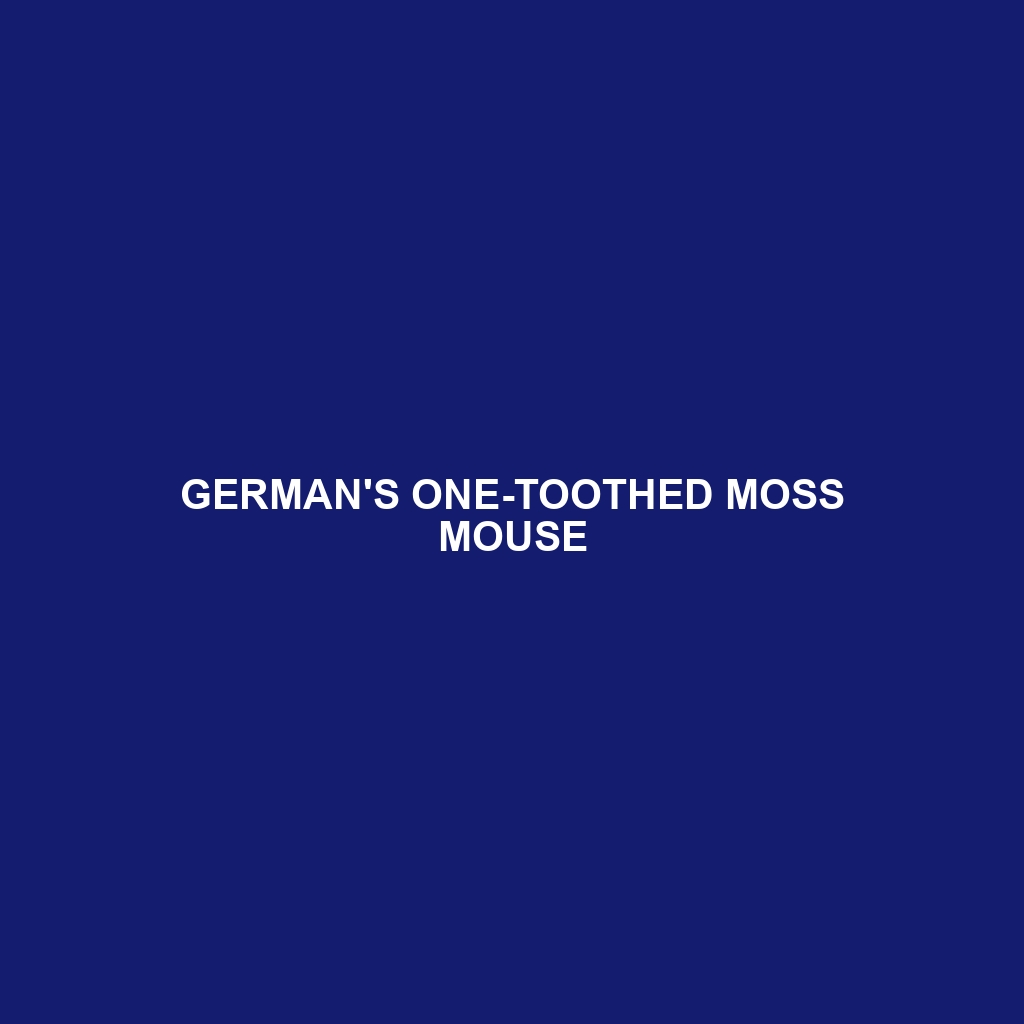Ankarafantsika Big-footed Mouse
Common Name: Ankarafantsika Big-footed Mouse
Scientific Name:
Habitat
The Ankarafantsika Big-footed Mouse is primarily found in the dry deciduous forests of Madagascar, specifically in the Ankarafantsika National Park. This unique species prefers regions with dense undergrowth and varied vegetation, providing shelter and foraging opportunities. The geographic distribution is limited to the northwest of Madagascar, where the climate and ecosystem support its survival and population growth.
Physical Characteristics
This medium-sized rodent exhibits a distinctive appearance characterized by its notably large feet, which are adapted for navigating through its forest habitat. The Ankarafantsika Big-footed Mouse has a body length of approximately 15 to 20 centimeters and possesses a fur coat that ranges from brownish to grayish, often featuring lighter underparts. Its large eyes and ears enhance its sensory perception in low light, making it a skilled nighttime forager.
Behavior
The Ankarafantsika Big-footed Mouse is predominantly nocturnal, becoming active during the night to avoid daytime predators. It exhibits a range of interesting behaviors, including burrowing and climbing, allowing it to exploit various niches within its habitat. Socially, these mice are often observed foraging in small groups, which enhances their foraging efficiency and provides protection against predators.
Diet
This species primarily feeds on seeds, fruits, and leaves, showcasing a natural attraction to high-energy food sources that sustain its active lifestyle. The Ankarafantsika Big-footed Mouse is known to play a crucial role in seed dispersal within its ecosystem, promoting plant diversity and growth. Their feeding habits can often lead to increased plant regeneration in their natural habitat.
Reproduction
The reproductive habits of the Ankarafantsika Big-footed Mouse include a breeding season that typically peaks during the warmer, wetter months. Females generally give birth to litters of 3 to 6 offspring after a gestation period of approximately 30 days. Notably, parental care is shared, with both sexes participating in nurturing the young until they are independent.
Conservation Status
The current conservation status of the Ankarafantsika Big-footed Mouse is classified as vulnerable due to habitat loss and fragmentation caused by agricultural expansion and deforestation. Conservation efforts are crucial to ensure the survival of this unique rodent and its ecosystem.
Interesting Facts
One fascinating fact about the Ankarafantsika Big-footed Mouse is its unique adaptation to climbing trees, which is unusual for mice. This behavior increases its survival chances, allowing it to escape ground-based predators and access diverse food sources. Additionally, it is part of a complex food web, serving as prey for larger mammals and birds.
Role in Ecosystem
The Ankarafantsika Big-footed Mouse plays a vital role in its ecosystem as both a seed disperser and as a food source for various predators. Its activities contribute to maintaining the ecological balance, and its presence indicates a healthy forest environment. By facilitating plant regeneration through their feeding habits, these mice help sustain the biodiversity of Madagascar’s unique habitats.
